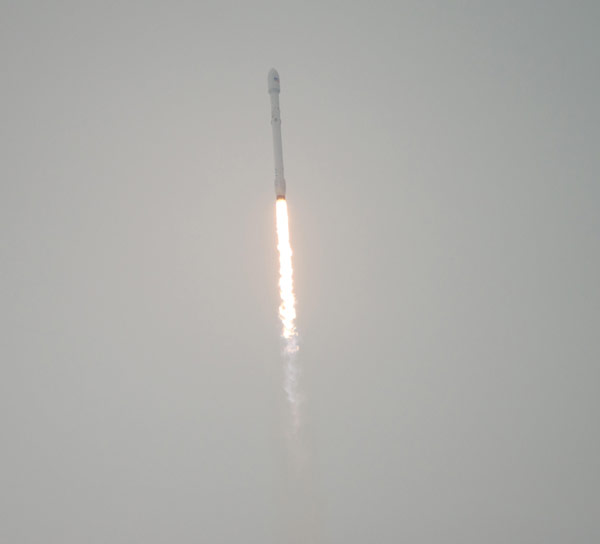SpaceX to resume flight to ISS with inflatable space habitat
Updated: 2016-04-09 04:04
(Xinhua)
|
|||||||||
WASHINGTON -- US space firm SpaceX is expected to resume its resupply mission to the International Space Station (ISS) on Friday, carrying aboard an experimental inflatable space habitat that might be crucial for future deep space explorations.
The SpaceX Dragon spacecraft is targeting liftoff on the company's Falcon 9 rocket at 4:43 p.m. local time(2043 GMT) from Cape Canaveral Air Force Station in Florida.
This is the California-based company's eighth cargo mission to the ISS. It also marked the first flight of Dragon to the ISS since June, when the Falcon 9 rocket exploded about two minutes after liftoff.
As usual, Spacex will attempt to land the Falcon 9's first stage on the "Of Course I Still Love You" droneship, which was stationed in the Atlantic Ocean off the Florida coast.
The company achieved one successful soft landing on a land-based pad at Cape Canaveral in December last year, but its four previous droneship landing attempts all failed.
"I certainly hope we're going to nail the landing this time," said Hans Koenigsmann, SpaceX's vice president for flight reliability, during a pre-launch press conference.
Among the almost 7,000 pounds (3,200 kilograms) of items inside the Dragon spacecraft is the 3,100-pound (1,400-kilogram) Bigelow Expandable Activity Module (BEAM), a 17.8-million-US-dollar project that will be attached to the ISS to test the use of an inflatable space habitat in microgravity.
"It is the future," said Kirk Shireman, manager of NASA's ISS program. "Humans will be using these kinds of modules as we move further and further off the planet, and actually as we inhabit low Earth orbit."
According to NASA, inflatable habitats greatly decrease the amount of transport volume at launch for future space missions, and take up less room on a rocket, but once set up, provide additional volume for living and working.
Shireman said the company that developed BEAM, Bigelow Aerospace, launched two inflatable modules about 10 years ago using Russian rockets but this will be the first time humans will interact with such a module.
Related Stories
Growing calls to make space for art-house films 2016-04-07 08:46
Internet giants in scramble to grab space on big screen 2016-03-31 08:37
Increased funding expected for space research 2016-03-18 08:07
Intel, Zhongguancun advance Maker Space 2016-03-14 13:54
Today's Top News
China gains stakes in Piraeus Deal
Riding on emotions
When the Bard met his Chinese match
EU to benefit from China's 13th Five-Year Plan
New app lets users text like Shakespeare
Zhubi Reef lighthouse comes to life
Huawei picks UK for global launch of new phone
Social media fury after woman claims attack in hotel
Hot Topics
Lunar probe , China growth forecasts, Emission rules get tougher, China seen through 'colored lens', International board,
Editor's Picks

|

|

|

|

|

|








